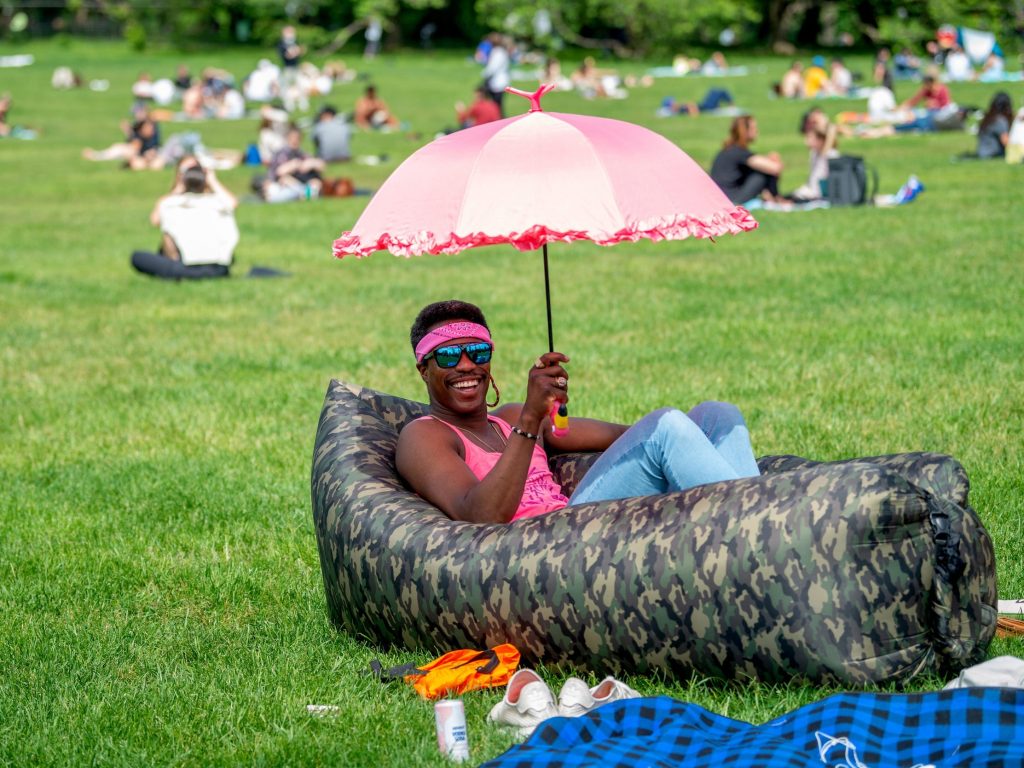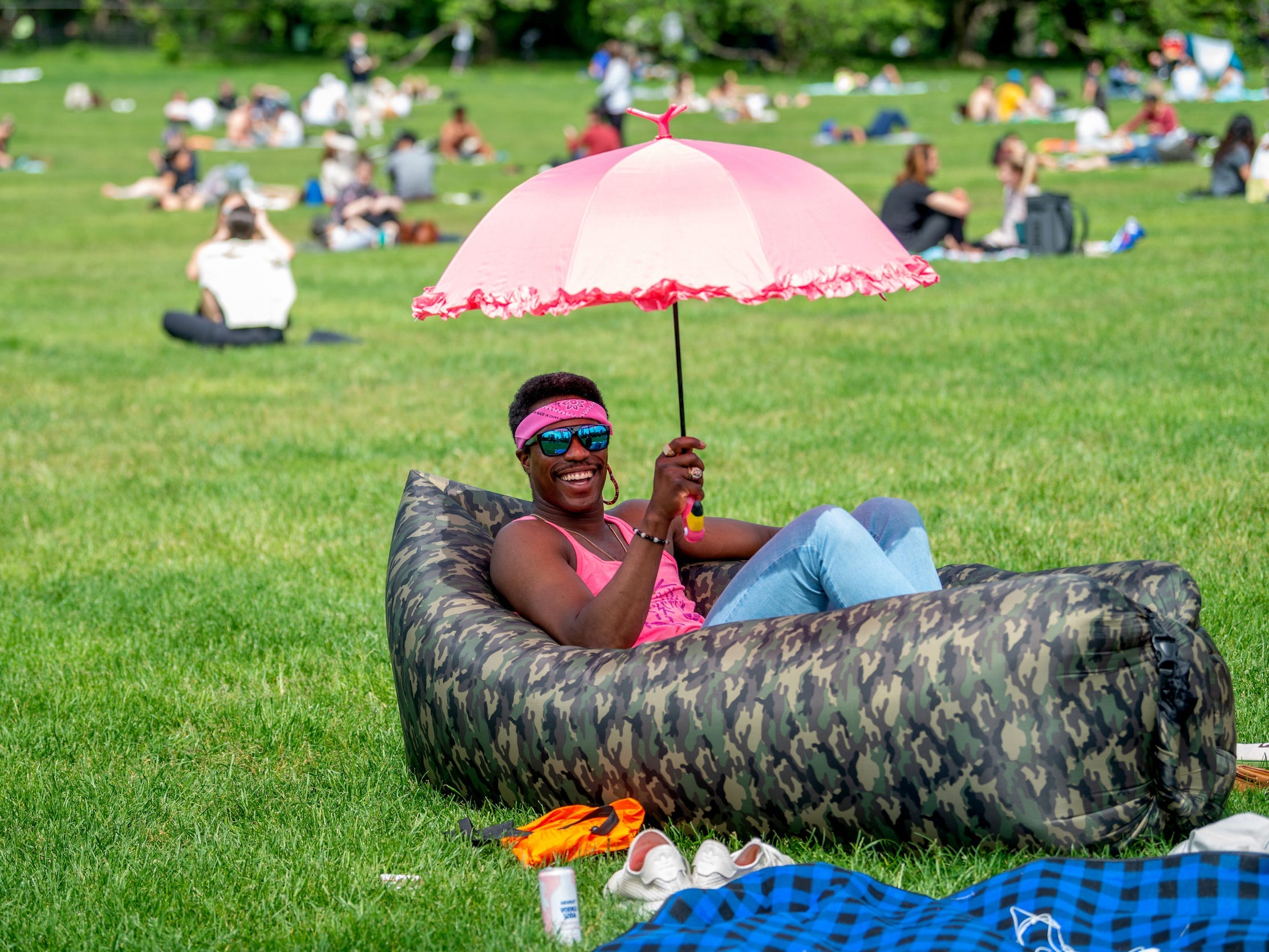
Alexi Rosenfeld/Getty Images
- New York City is back.
- America's biggest city is recovering as New Yorkers return and its economy reopens.
- It's not the same as pre-pandemic NYC, but it's the beginning of the city's next chapter.
- See more stories on Insider's business page.
I knew New York City was back when I found myself dancing on top of a booth in an East Village bar last weekend.
The night began with dinner out and ended with another bargoer's drink on my shoe, eating pizza on the street, and an invitation from a six-pack-wielding stranger for my friends and I to drink beer and play "Mario Kart" at his apartment.
That is all to say: It was a normal Saturday night in NYC, one event in a weekend that felt very much like the Before Times. I also worked in the Insider office for the first time that Friday and hit the gym on Sunday.
Pfizer made all these adventures possible, and it seems that the vaccines are having the same effect on New Yorkers across the city.
For the past month, I've noticed the magical – and exhausting – things that make New York New York coming to life again: a stalled 1 train, a crowded 6 train, getting turned down by a full cab, tourists getting in my way of shopping on Fifth Avenue, trying four newly opened restaurants, the throngs of sunbathers and picnickers in Central Park, and the familiar murmurs of gossip and chatter over wine glasses on a rooftop. It's not just a feeling: New York City's economy is genuinely healing.
It's also a far cry from a year ago, when New York became the center of the coronavirus in the US and everything that once lit up New York - the distant squares of office windows, taxi-cab lights, and Times Square - dimmed.
Even today, traces of pandemic NYC remain. My Saturday bar closed at midnight, and it took about four attempts to grab a late-night bite to eat at a restaurant not closing by 11 p.m. on Friday night, an insult in the city that never sleeps.
But the return of New Yorkers, lockdown lifting, and a financial boost have revived the city's energy. NYC as we once knew it is gone, but the big city is back.
New Yorkers can't stay away
NYC's obituary was written countless times in 2020, prompted by shuttering businesses and the wealthy fleeing to upstate for more space or to the palm trees down south.
But the city "was just taking a nap," Bella, a 28-year-old transplant New Yorker, told me. She joked she knew it was back after recently being catcalled by a gang of bicyclers.
Read more: Florida isn't replacing New York after all
The data agrees with Bella's diagnosis. The supposed mass exodus out of the city wasn't so massive, according to recent data from USPS. According to Bloomberg, more Manhattanites moved to Brooklyn than anywhere else between March 2020 and February - 20,000 of them, compared with 19,000 Manhattanites who moved to Florida, 10,000 of whom plan to stay permanently. They'll probably be back.
NYC also remains home to 7,743 ultra-high-net-worth individuals - more than any other city in the world, according to a Knight Frank and Douglas Elliman report from March. Mansion Global said the number of outward migrants from the NYC metro area ticked upward from 2019 to 2020 - a loss of 6.6 per 1,000 residents grew to 10.9 - but those who left for the suburbs were already returning.
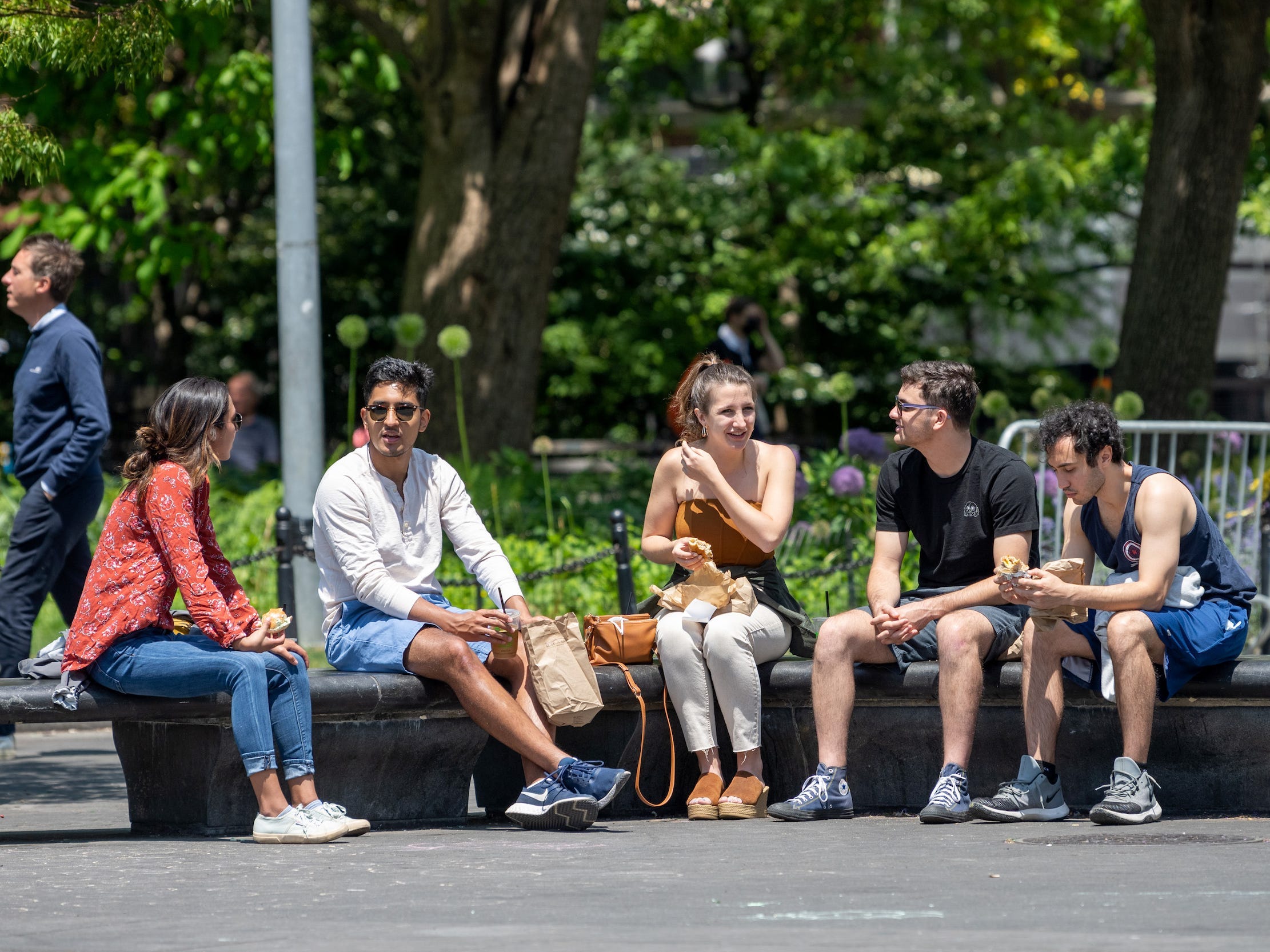
Alexi Rosenfeld/Getty Images
City real estate, once plummeting, is rebounding. New Yorkers are upgrading to wealthier neighborhoods and fancier apartments, while there's evidence that overseas buyers are starting to drive sales again, as are young professionals looking to buy for the first time. The number of sales in Manhattan increased by 28.7% from the last three months of 2020 to the first three of 2021, according to a Douglas Elliman report.
Brooklyn's real-estate market is recovering the fastest, and the borough has become so popular, it now costs nearly as much to live there as it does in Manhattan, The New York Times reported.
"Whoever wrote off New York was wrong," Kenneth Horn, the founder of Alchemy Properties, told Mansion Global. "This, of course, has been horrible. We've lived through a lot different, right. But people want to live in New York. People love the vibrancy."
Late-night bars and subways
NYC hasn't even reached its peak return of residents, but it already feels alive. A recent Bank of America Research note, from a team led by Head of US Economics Michelle Meyer, said this month would spark a dominolike return to the city, ultimately proving the mass exodus narrative was more myth than reality.
By the end of May, restrictions lifted include: most industry capacity limits, the limit on residential outdoor gatherings, the mask mandate for vaccinated people, and the midnight outdoor- and indoor-dining-area curfew for bars and restaurants.
Read more: The urban exodus out of New York City and San Francisco is more myth than reality
As a city dweller, I no longer have to order food with my Moscow mule, and I can resume my love-hate relationship with the subway again 24/7. I can book a ticket for Broadway in September, listen to crowds roar during a Knicks game at Madison Square Garden, and start checking out library books.
As Gov. Andrew Cuomo of New York wrote in a Tweet announcing some of these reopenings earlier this month, "NY is coming back!"
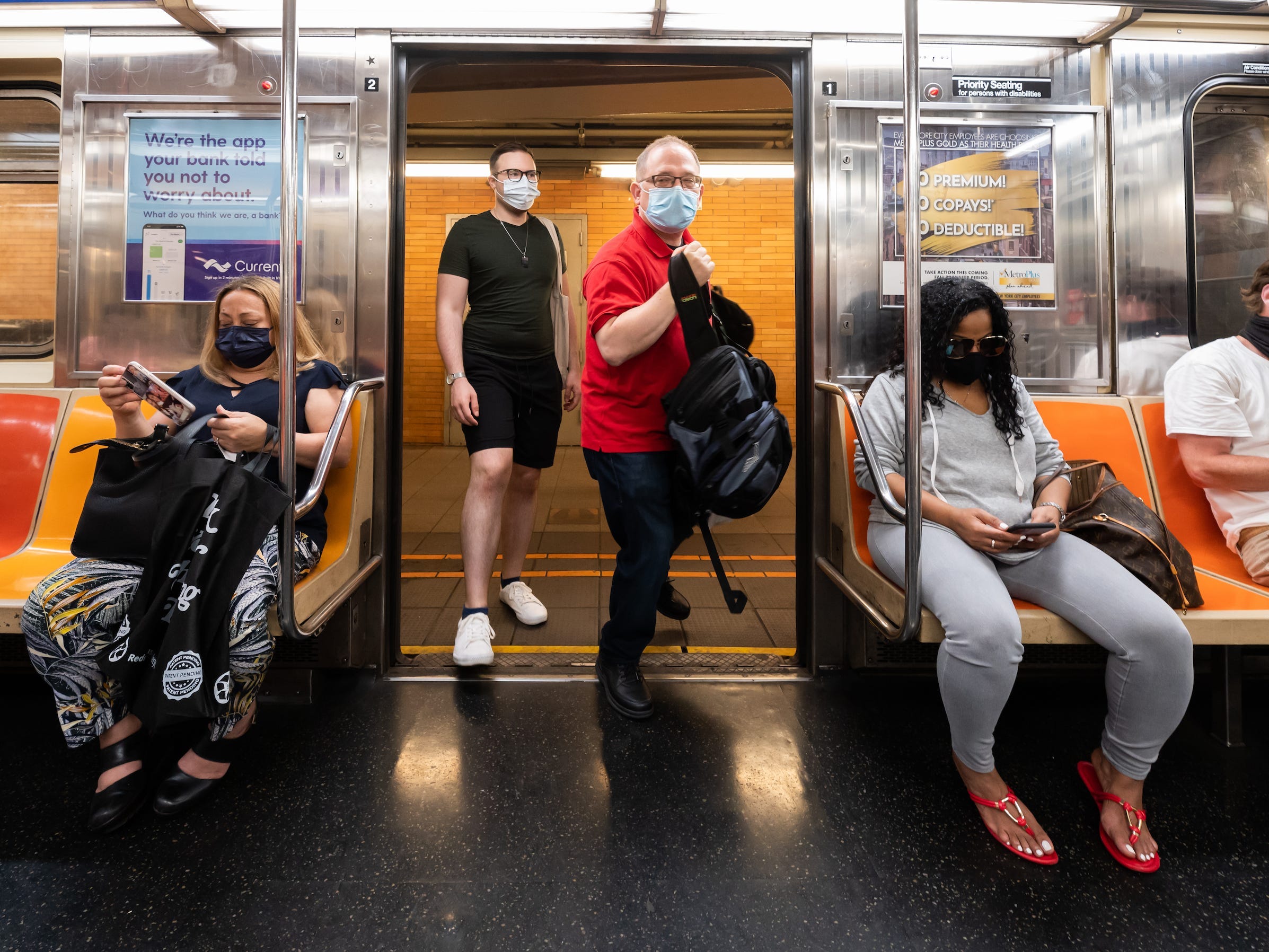
Noam Galai/Getty Images
Now, while the state of New York officially reopened in May, Mayor Bill de Blasio has announced that he's eyeing a full reopening for the city on July 1 and plans to eliminate remote learning come fall. But the Legislature unwinding many of the lifts has made it feel like city is already back in action.
Offices, too, have jumped on the reopening spree. Wall Street is preparing for its summer return in a matter of weeks, with both Credit Suisse and Goldman Sachs asking their employees to come back to the office starting mid-June. Over in tech, Facebook is gearing up to bring its employees back to its New York City offices.
"I haven't had hope for any return to actual normalcy until now, seeing people both indoor and outdoors without masks, and it's really starting to hit me that this wasn't actually going to be forever," Kelsey Peter, a 27-year-old nonprofit worker who stayed in NYC when the pandemic hit, told Insider.
Cash is flowing
The boomerang migration, uptick in real estate, and economic reopening are all helping cash flow again in a city made of money.
Card spending was up by 38% in the NYC metro area compared with the previous year and 17% compared with two years ago for the week ending May 22, according to BofA Research.
Spending on brick-and-mortar retail in NYC by local households hovered around 70% by the end of 2020, as compared to a 74% pre-pandemic trend, indicating a minimal drop from outmigration, BofA also found, while in-person spending on restaurants has improved. As of mid-April, it was still down 30% compared with two years ago but a major improvement from the 70% drop at the end of January.
NYC's finances are also in better shape than expected. While the state's tax revenue collected over the past fiscal year was $513.3 million lower than the previous year, the state was fearing a $3 billion bigger drop, New York Comptroller Thomas DiNapoli told Bloomberg, and a large chunk of that came from the city.
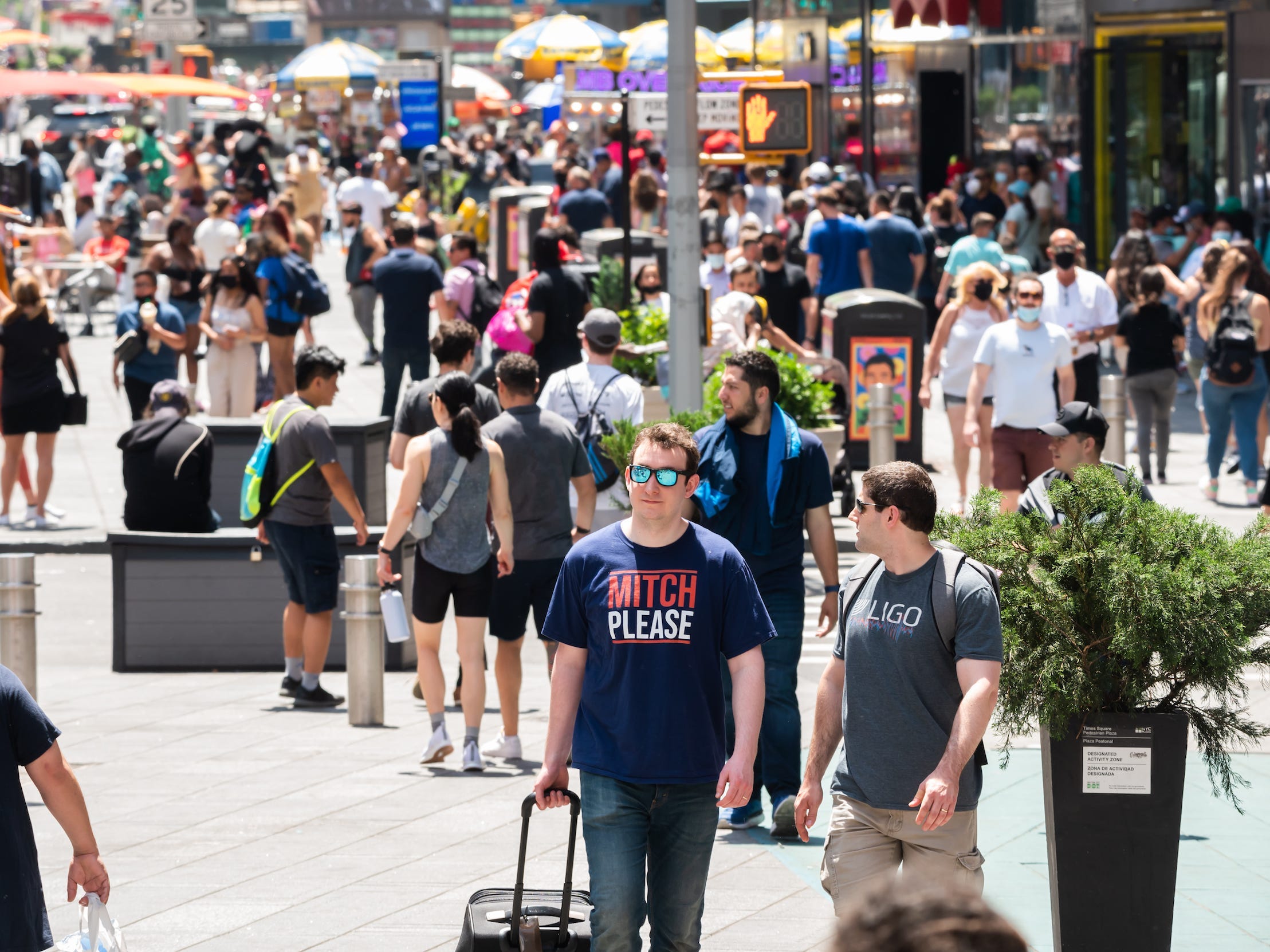
Noam Galai/Getty Images
And President Joe Biden's stimulus package included $5.6 billion for NYC, which Insider's Juliana Kaplan reported likely saved catastrophic cuts to the city budget. This sentiment was largely confirmed at a City Council hearing in March, when Department of Finance Commissioner Sherif Soliman said this federal aid had given the city a "shot in the arm" financially and his office was optimistic for a "full recovery."
At the end of April, de Blasio announced a $98.6 billion budget, $10 billion higher than previously planned, to help jump-start the city's recovery. "These investments are about bringing the city back, and they just can't wait," he said in a press briefing, according to the New York Daily News. "Sometimes you have to spend money to make money."
Read more: Millionaire New Yorkers are now set to pay the highest taxes in the country
However, long-term budget challenges still loom. Some experts have said there's no guarantee NYC will be able to continue funding de Blasio's budget, calling on him to do more.
But NYC is also set to get another injection of money beginning next year, now that Cuomo has finalized a budget that would have millionaire New Yorkers pay 13.5% to 14.8% in local and state taxes - the highest taxes in the country.
NYC's next chapter
To say NYC 2021 resembles NYC 2019 would be inaccurate. Several aspects of the city still aren't quite "normal."
Tourism may not fully recover until 2025, plenty of the wealthy did permanently move or have yet to return, and central business districts like midtown aren't their typical bustling selves. The amount of Manhattan office space available is the highest it's been in 30 years, and rents also haven't reached their pre-pandemic norms, signaling that NYC's population still isn't what it was. Urban areas stand to see an estimated 10% drop in spending from an economy where more workers are remote - and even more in cities like New York.
The city's vaccination rollout could also pose a challenge to the progress made so far. While nearly 61% of NYC adults have at least one dose of the vaccine, that still leaves about 39% who aren't vaccinated. Vaccination rates are slowing across the state as a whole, leading de Blasio to offer weekly incentives for getting vaccinated.
The contagious coronavirus variant spreading throughout India and other parts of Asia may also bring with it a risk of some form of lockdown returning later this year. On Thursday, UK Prime Minister Boris Johnson said that the country's full reopening could be delayed because of the variant, despite a successful vaccination campaign similar to America's.
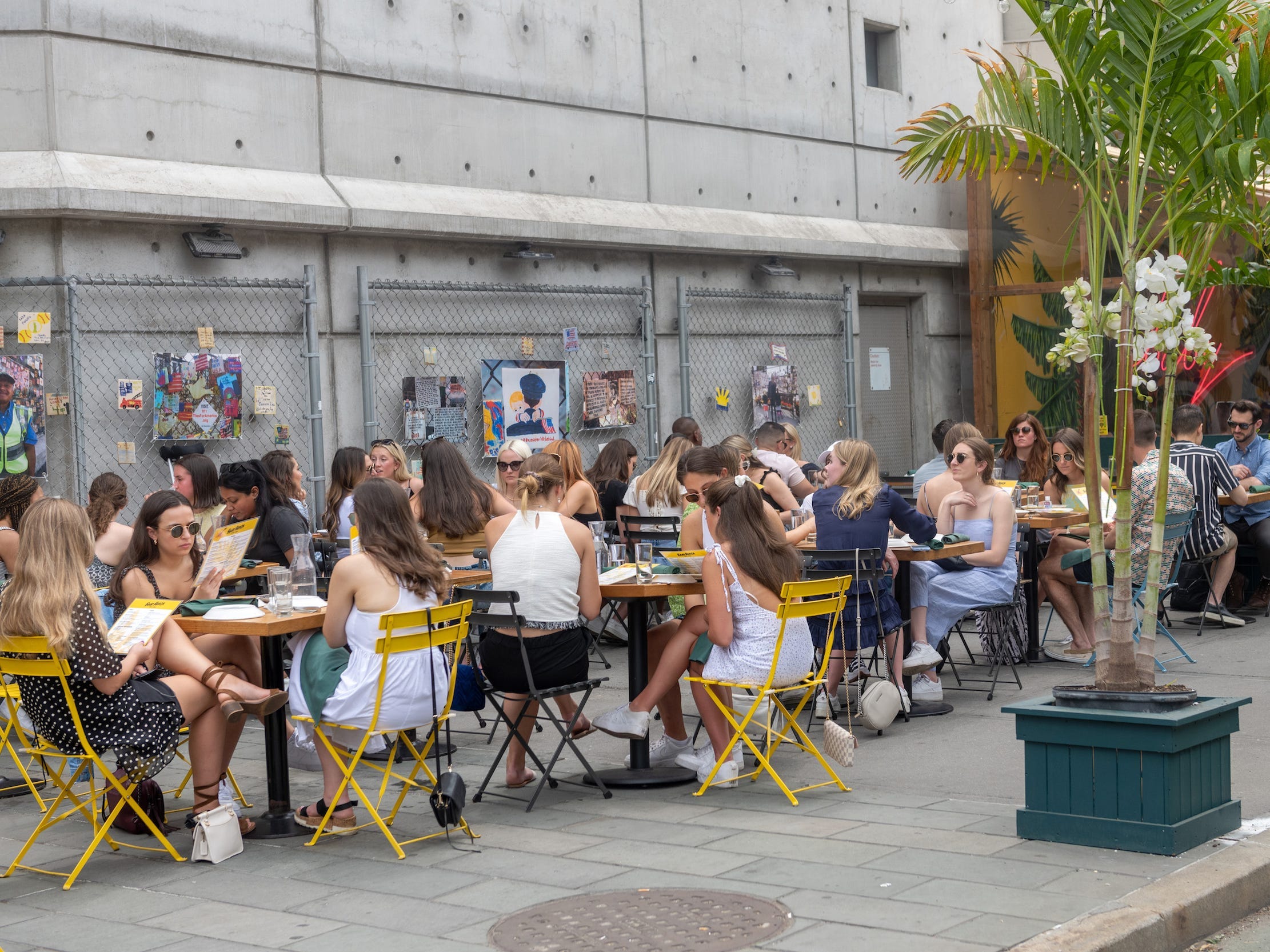
Alexi Rosenfeld/Getty Images
And while NYC is never going to return to its 2019 economy, just as America itself won't, that doesn't mean that the city has lost its luster. Much like it did after the Great Depression and 9/11, NYC is entering the next chapter of its life - and that's starting now, in line with the race for a new mayor come November.
BofA noted potential for some recovery in the near term, as NYC remains a "premier city for young renters given status as economic, financial, and cultural centers." The pullback in rents, it said, has also helped make NYC living more affordable and enticing for young professionals.
Read more: It's starting to look like New York City will be just fine
As the city was once America's coronavirus center, NYC's reopening serves as a metaphor for the country's pandemic progress. It's also revived the city's intangible energy.
For some, this part of NYC never died. Even when the city felt empty, Peter said, there were so many people looking out for each other.
"You would get used to seeing the same vendor's face at the wine store or at the coffee shop when you're getting to-go," she added. "That was all during the worst of it, and things only got better from there. It was always a community."
As someone who also rode out the pandemic out in Manhattan, I agree with Peter. My local bodega owner, the friendly parking-garage attendant on my street, and a fellow parkgoer and his five poodles became the faces I'd typically see during my pandemic routine. With endless options to experience the city again, I'm back to encountering strangers and forgotten faces on the regular, from my waiter at Lil' Frankie's to my hairstylist and colorist, so much so that it's getting somewhat exhausting.
That can mean only one thing: New York is back.

